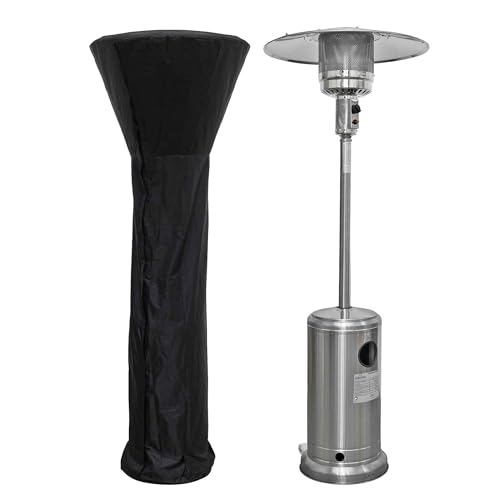Watch Out: What Buy Outdoor Patio Heaters Is Taking Over And What To Do About It
Guide to Buying Outdoor Patio Heaters: Everything You Need to Know
As the cool evenings of fall and winter approach, lots of property owners and restaurant owners are on the lookout for methods to extend their outdoor satisfaction. Outdoor patio heaters supply a comfortable and welcoming environment, making them vital for alfresco dining, barbecues, or just enjoying a serene night exterior. This guide aims to use a thorough summary of outdoor patio heaters, consisting of the types available, key features to consider, suggestions for buying, and responses to regularly asked questions.
Kinds Of Outdoor Patio Heaters
Patio heaters are developed in numerous styles and technologies to satisfy varied needs. Here's a summary of the most typical types:
Heater Type
Description
Pros
Cons
Propane Heaters
Utilize liquid propane gas for heating, frequently portable with wheels for easy movement.
Portable, high heat output.
Limited run time; needs propane refills.
Natural Gas Heaters
Connect directly to a gas line, providing consistent heat without the requirement for refills.
Hassle-free and cost-effective in the long term.
Permanently installed; less versatile.
Electric Heaters
Make use of electrical power to produce heat, often in a sleek, modern design.
Easy to utilize; no emissions or fumes.
Higher energy expenses; minimal heat variety.
Infrared Heaters
Usage infrared technology to straight warm items and people rather of the surrounding air.
Efficient and instant heat.
Restricted range; needs electrical energy.
Tabletop Heaters
Smaller sized, portable heaters developed to sit on tables for intimate seating arrangements.
Space-saving; stylish options available.
Limited heating capacity compared to bigger models.
Key Features to Consider
When selecting an outdoor patio heater, it's important to assess numerous features to ensure you make an informed choice. Here are some important aspects to consider:
Heat Output: Measured in BTUs (British Thermal Units), a higher BTU ranking shows more heat output. For a comfortable outdoor experience, search for heaters providing between 30,000 to 50,000 BTUs.
Size and Capacity: The size of the heater ought to be proportionate to the space available for heating. Think about the area size and the variety of individuals you expect to amuse.
Product: Patio heaters are normally made from stainless-steel, aluminum, or copper. Stainless steel is robust and resistant to the components, which is ideal for outdoor use.
Design: Choose a design that matches your outdoor decoration. There are Outdoor Heating Options , including freestanding, wall-mounted, and tabletop options. Consider what fits finest in your space.
Security Features: Look for designs with safety features, such as an automated shut-off switch, anti-tilt protection, and heat-resistant materials. This makes sure the security of your household and guests.
Mobility: If you prepare to move your heater regularly, go with a portable design with wheels or a light-weight style.
Fuel Type: Different fuel types offer special advantages. While propane heaters are portable, natural gas heaters use a more economical long-lasting heating option if a connection is readily available.
Buying Tips
To optimize your financial investment in an outdoor patio heater, think about these ideas while shopping:
Set a Budget: Determine your budget plan before browsing. Rates vary significantly depending on size and functions.
Read Reviews: Look for consumer evaluates online to evaluate performance and dependability.
Store Seasonally: Prices may drop during off-seasons, making it the best time to score a deal.
Buy Only When Necessary: Assess your heating requires regularly. If you rarely use the outdoor space during chillier months, focus on quality over quantity.
Think About Warranty and Support: Check for warranty policies and consumer support. A great warranty can supply assurance.
Regularly Asked Questions (FAQs)
1. The length of time does a propane tank last in an outdoor heater?
The runtime of a propane tank differs depending upon the BTU output of the heater. Normally, a standard 20 lb propane tank can last anywhere from 8 to 12 hours, depending upon the heat setting.
2. Can I utilize an outdoor patio heater indoors?
No, outdoor patio heaters are not created for indoor usage due to the danger of carbon monoxide gas poisoning and combustion dangers. Always use heaters in well-ventilated areas.
3. Do outdoor heaters work in windy conditions?
Some outdoor heaters might have a hard time to preserve heat in windy conditions, specifically those designed to radiate heat into the surrounding air instead of straight heating objects. Nevertheless, wind-resistant models do exist.
4. What maintenance does an outdoor patio heater need?
Regular upkeep consists of cleaning up the heater after usage, examining for gas leaks (if applicable), guaranteeing all connections are safe, and storing the heater throughout severe weather.
5. Is it safe to leave an outdoor heater unattended?
No, it is not a good idea to leave outdoor heaters ignored, specifically those using open flame. Constantly switch off heaters when not in use, and guarantee children and pets are kept at a safe distance.
Outdoor patio heaters are a valuable addition to any outdoor space, enabling house owners and businesses to delight in the fresh air even when temperatures drop. Understanding the different types of heaters, essential features, and useful buying suggestions will empower consumers to pick the best unit that fulfills their specific needs. By considering security, maintenance, and the atmosphere you want to develop, you can boost your outdoor living experience for several years to come.
